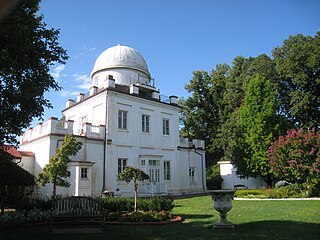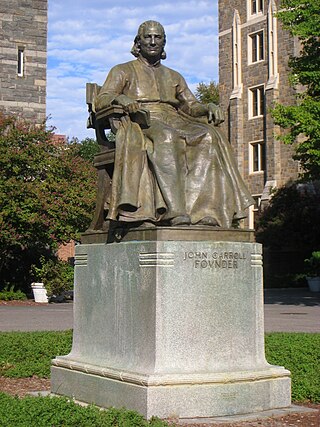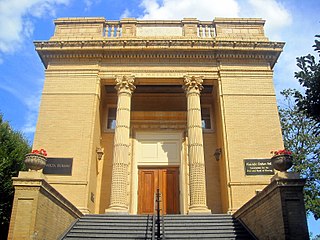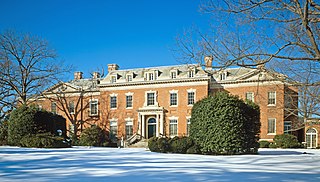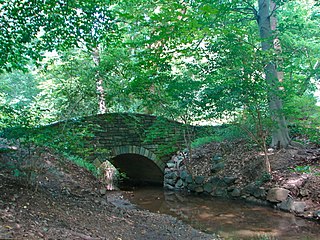Self-guided Sightseeing Tour #14 in Washington, United States
Legend
Tour Facts
2.8 km
64 m
Experience Washington in United States in a whole new way with our free self-guided sightseeing tour. This site not only offers you practical information and insider tips, but also a rich variety of activities and sights you shouldn't miss. Whether you love art and culture, want to explore historical sites or simply want to experience the vibrant atmosphere of a lively city - you'll find everything you need for your personal adventure here.
Individual Sights in WashingtonSight 1: Georgetown University Astronomical Observatory
The Georgetown University Astronomical Observatory was founded in 1841 by Father James Curley of the Department of Physics at Georgetown College. Father Curley chose a site on the college grounds, planned the building, and supervised its construction to its completion in 1844. Costs were initially paid by Rev. Thomas Meredith Jenkins, S.J., and Rev. Charles H. Stonestreet, S.J., who were Georgetown professors at the time. The observatory was used in 1846 to determine the latitude and longitude of Washington, D.C., which Curley determined to be latitude 38°54′26N and longitude 5h8m18.29s.
Wikipedia: Georgetown University Astronomical Observatory (EN)
Sight 2: Bishop John Carroll
Bishop John Carroll is a statue by the sculptor Jerome Connor commemorating Archbishop John Carroll, the founder of Georgetown University and the first Catholic bishop in the United States. Located in front of Healy Hall, on university's campus in the Georgetown neighborhood of Washington, D.C., the statue consists of a bronze sculpture of Carroll on top of a granite pedestal.
Sight 3: Volta Bureau
The Volta Laboratory and the Volta Bureau were created in Georgetown, Washington, D.C., by Alexander Graham Bell.
Sight 4: Dumbarton Oaks
Dumbarton Oaks, formally the Dumbarton Oaks Research Library and Collection, is a historic estate in the Georgetown neighborhood of Washington, D.C. It was the residence and gardens of wealthy U.S. diplomat Robert Woods Bliss and his wife Mildred Barnes Bliss. The estate was founded by the Bliss couple, who gave the home and gardens to Harvard University in 1940.
Sight 5: Dumbarton Oaks Park
The Dumbarton Oaks Park is a public park, located in the 3100 block of R Street, Northwest, Washington, D.C., in the Georgetown neighborhood. Access is via Lovers' Lane from R Street, east of 32nd Street. It is located near Dumbarton Oaks, Montrose Park, and Oak Hill Cemetery. It is part of the Georgetown Historic District. Now part of Rock Creek Park, it originally belonged to the Dumbarton Oaks estate which had designed it as an enhanced "natural" area. In the 2020's the National Park Service worked with the estate to restore and preserve the landscape architecture of Beatrix Farrand in the park.
Share
How likely are you to recommend us?
Disclaimer Please be aware of your surroundings and do not enter private property. We are not liable for any damages that occur during the tours.
GPX-Download For navigation apps and GPS devices you can download the tour as a GPX file.
